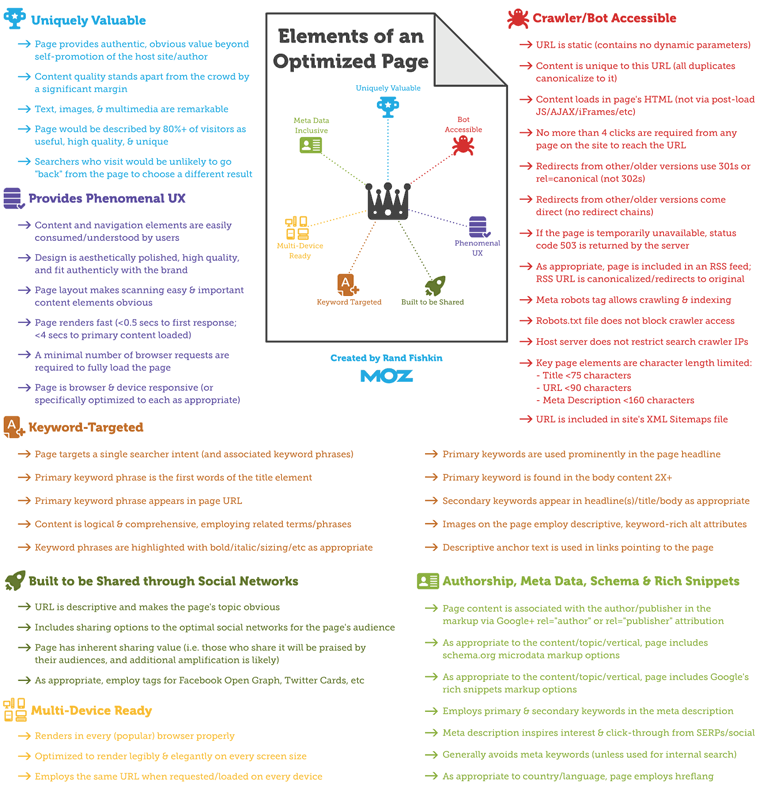The following variables make up the on-page search ranking factors Google looks for. On-page SEO is an easy win for companies/bloggers that have yet to employ any search marketing. You can easily change up your titles tags, meta tags and headers and track your improvement in search results using Google Webmaster Tools.
For people just getting into SEO, have fun with the on-page factors – you can definitely get on page one by nailing these variables.
If you’re having trouble sounding natural while incorporating your keywords and secondary keywords on to your webpages, consider working with an SEO specialist.
If you scroll further down, there is a more extensive look at on-page SEO by Moz, captured in their own unique infographic. I recommend opening up the image in a new tab to view it better.
Keywords placement on/in the following elements:
- Title tags
- Meta tags (descriptions – these should also be compelling click bait)
- URL
- Header 1
- Header 2
- Header 3
- Keyword density
- Image file names
- Alt text
- Employs secondary keywords
- Descriptive, keyword rich anchor text
- Include at least one outbound link
Meeting Content, UX Guidelines:
- Original content
- Content depth (minimum 300 words, shoot for 800)
- Easy crawlability
- Simple page layout for user
- Easily accessible navigation menu
- Non dynamic URLs
- Page targets a single phrase
Other
- Google authorship
- Contains rich snippets
- Title length <90 characters
- Meta tag length <75 characters


